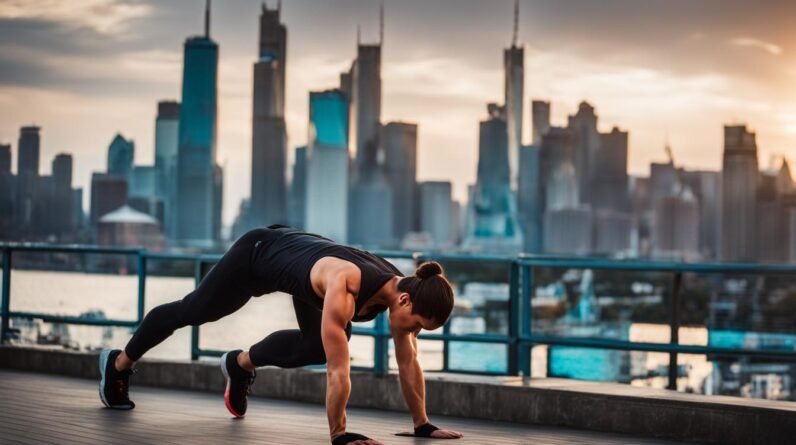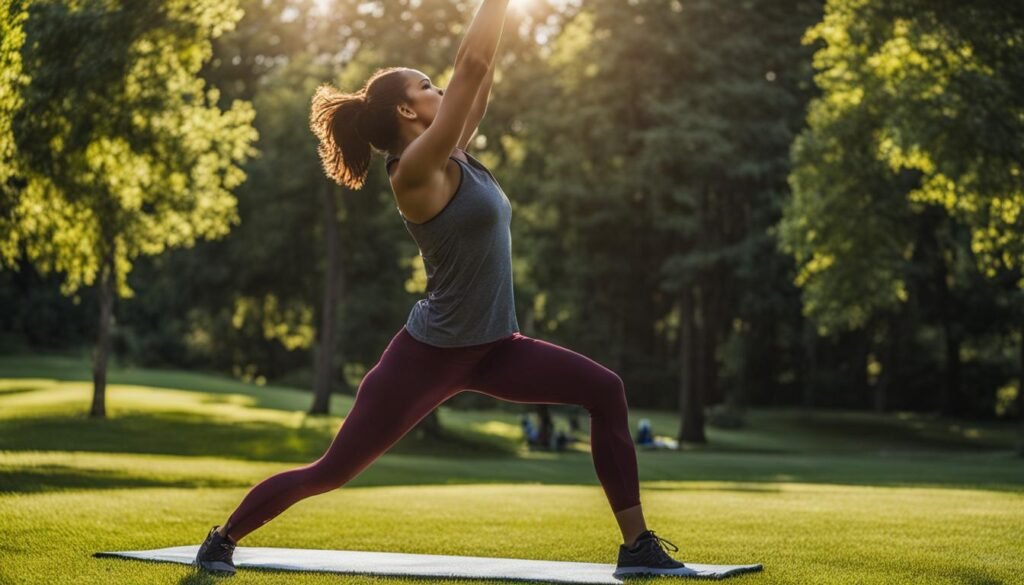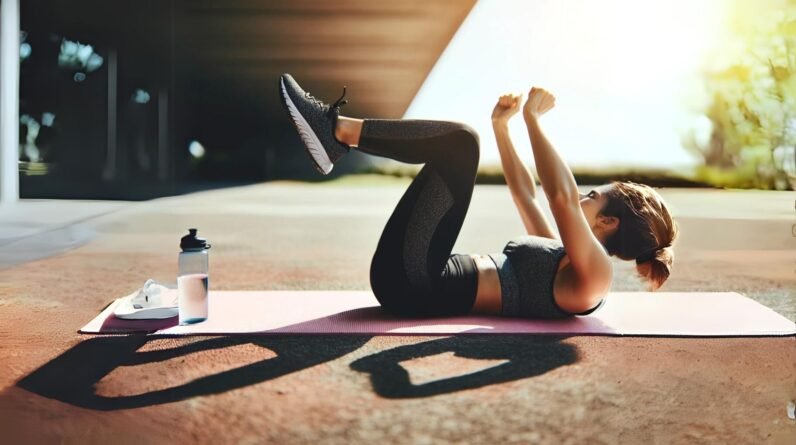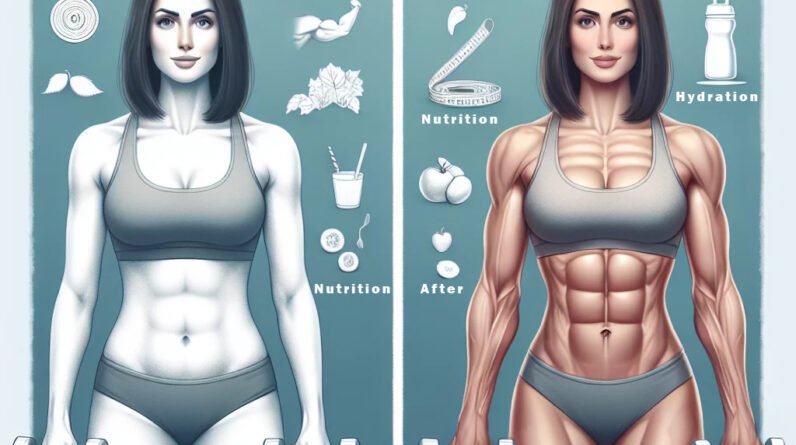
Best Calisthenics Beginner Workouts
Are you ready to embark on your fitness journey? If you’re a beginner looking to get fit, improve your strength, and increase flexibility, calisthenics is the perfect workout for you. Calisthenics combines aerobic and muscle-strengthening activities, using only your bodyweight. No expensive equipment or gym membership required! In this comprehensive guide, we will provide you with the best calisthenics beginner workout routine and tips on how to start calisthenics.

- Calisthenics is a form of bodyweight training that combines aerobic and muscle-strengthening activities.
- It is a great way for beginners to get fit, improve strength, and increase flexibility.
- Calisthenics exercises require no equipment and can be done at home or on-the-go.
- Starting with a structured workout plan is important for beginners.
- The best calisthenics exercises for beginners include squats, push-ups, planks, and lunges.
What is Calisthenics?
Calisthenics is a form of exercise that utilizes bodyweight movements to build strength and improve fitness. It involves performing various exercises such as squats, planks, and push-ups, all of which target different muscle groups and contribute to the development of functional strength. The beauty of calisthenics lies in its simplicity and accessibility, as it requires no expensive equipment and can be done anywhere.
By using your bodyweight as resistance, calisthenics provides a challenging workout that helps improve overall fitness levels. Through consistent practice, you can enhance your strength, flexibility, and endurance. Calisthenics exercises are designed to engage multiple muscle groups simultaneously, leading to a more balanced and toned physique.
Whether you’re a beginner or an advanced fitness enthusiast, calisthenics offers a versatile training method that can be tailored to your needs. It allows for progressions and modifications to suit your current fitness level, making it suitable for individuals of all ages and abilities. So if you’re looking to get in shape, build strength, and increase your body awareness, calisthenics is an excellent option to consider.
Table: Types of Calisthenics Exercises
| Exercise | Description |
|---|---|
| Squats | Targets the lower body, particularly the quadriceps, hamstrings, and glutes. Helps improve leg strength and stability. |
| Planks | Engages the core muscles, including the abdominals, obliques, and lower back. Improves core strength and stability. |
| Push-ups | Works the chest, triceps, and shoulders. Enhances upper body strength and promotes good posture. |
Benefits of Calisthenics for Beginners
Calisthenics training is a fantastic choice for beginners who want to improve their fitness level and build strength. This full-body workout method offers several key benefits that make it a popular option for those starting their fitness journey.
Strength Training
One of the primary advantages of calisthenics is its ability to build strength. By using your bodyweight as resistance, you can target multiple muscle groups simultaneously, helping you develop overall strength and muscle tone. Exercises like push-ups, squats, and lunges engage multiple muscle groups, providing a comprehensive strength training session.
Full-Body Workout
Calisthenics offers a complete workout for your entire body. Unlike isolated exercises that focus on specific muscles, calisthenics movements require coordination and engagement from various muscle groups. This leads to improved balance, flexibility, and overall body control. With calisthenics, you can achieve a well-rounded workout that targets both your upper and lower body.
Endurance
Calisthenics training also helps improve your endurance levels. As you progress through different exercises and increase difficulty, your cardiovascular system gets challenged, leading to enhanced stamina and endurance. By consistently pushing your limits and engaging in calisthenics, you can increase your endurance over time.
Overall, calisthenics training provides a multitude of benefits for beginners. It helps build strength, offers a full-body workout, and improves endurance. By incorporating calisthenics into your fitness routine, you can achieve your fitness goals and enjoy the many advantages this workout method has to offer.

How to Start Calisthenics Training: A Beginner Workout Plan
If you’re new to calisthenics and looking to start your fitness journey, it’s important to begin with a structured workout plan designed specifically for beginners. A well-designed beginner calisthenics training program will help you build strength, improve flexibility, and gradually progress to more advanced exercises.
When starting calisthenics, it’s essential to focus on exercises that require no equipment and can be done at home. This allows you to easily incorporate workouts into your daily routine without the need for a gym membership or expensive equipment. Bodyweight exercises such as squats, push-ups, and planks are perfect options for beginners to develop strength and stability.
To guide you through your calisthenics journey, we have created a comprehensive beginner workout plan that includes a variety of exercises targeting different muscle groups. This plan is designed to be progressive, meaning it starts with basic movements and gradually increases in difficulty as you become stronger and more experienced.
Beginner Workout Plan:
Below is an example of a beginner calisthenics workout plan that you can follow at home. Remember to warm up before each workout session and listen to your body. If an exercise feels too challenging, you can modify it or start with an easier variation. Consistency is key, so aim to perform this workout plan 2-3 times per week and gradually increase the number of repetitions or sets as you progress.
| Exercise | Repetitions | Sets |
|---|---|---|
| Squats | 10-12 | 3 |
| Push-ups (knees or full) | 8-10 | 3 |
| Plank | 30 seconds | 3 |
| Lunges | 10-12 (each leg) | 3 |
| Mountain climbers | 10-12 (each leg) | 3 |
| Jumping jacks | 10-12 | 3 |
This beginner workout plan includes a combination of lower body, upper body, and core exercises to provide a full-body workout. As you progress and feel more comfortable with these exercises, you can gradually increase the number of repetitions or sets to challenge yourself further.
Remember, consistency and proper form are key to seeing progress in your calisthenics journey. Stay dedicated and patient, and you’ll soon start reaping the benefits of this effective and accessible form of training.
Best Calisthenics Exercises for Beginners
When starting your calisthenics journey as a beginner, it’s important to focus on exercises that are effective, safe, and suitable for your fitness level. Here are some of the best calisthenics exercises for beginners:
1. Squats
Squats are a fundamental exercise in calisthenics that target your lower body muscles, including your quadriceps, hamstrings, and glutes. To perform a squat, stand with your feet shoulder-width apart, engage your core, and lower your body by bending your knees until your thighs are parallel to the ground. Push through your heels to return to the starting position.
2. Push-ups
Push-ups are a classic bodyweight exercise that work your chest, shoulders, triceps, and core. Start in a plank position with your hands slightly wider than shoulder-width apart. Lower your body by bending your elbows until your chest is close to the ground, then push back up to the starting position. Modify the exercise by performing push-ups on your knees or against a wall if needed.
3. Planks
Planks are excellent for strengthening your core muscles, including your abs, back, and stabilizer muscles. Begin by getting into a push-up position, then lower yourself onto your forearms, elbows aligned under your shoulders. Keep your body in a straight line from head to toe, engaging your core muscles. Hold this position for as long as you can while maintaining proper form.
4. Lunges
Lunges target your lower body muscles, particularly your quadriceps, hamstrings, and glutes. Begin by standing tall with your feet hip-width apart. Take a step forward with your right foot, bending both knees until your front thigh is parallel to the ground and your back knee hovers just above the floor. Push through your front heel and return to the starting position. Alternate legs with each repetition.
Incorporating resistance bands into your calisthenics routine is a great way to add variety and challenge to your workouts. You can use resistance bands to increase the intensity of exercises like squats and lunges by providing resistance throughout the movement. They are portable and easy to use, making them perfect for beginners who want to enhance their bodyweight training.
| Exercise | Muscles Targeted |
|---|---|
| Squats | Quadriceps, hamstrings, glutes |
| Push-ups | Chest, shoulders, triceps, core |
| Planks | Core muscles, abs, back |
| Lunges | Quadriceps, hamstrings, glutes |
Remember to focus on proper form and gradually increase the difficulty of your exercises as your strength and fitness level improve. Stay consistent with your calisthenics workouts, and you’ll soon see progress and improvements in your overall fitness.

When it comes to achieving success with calisthenics, there are a few key tips to keep in mind. Whether you’re a beginner or have some experience with bodyweight training, these tips can help you reach your fitness goals.
Invest in the Right Equipment
While calisthenics requires little to no equipment, having the right tools can enhance your workouts and provide additional challenges. Consider investing in basic calisthenics equipment like a pull-up bar, resistance bands, or gymnastic rings. These tools can add variety to your routine and help you progress to more advanced exercises.
Focus on Functional Strength
Functional strength is the ability to perform everyday activities with ease and efficiency. In calisthenics, it’s important to focus on exercises that mimic real-life movements. By incorporating exercises like squats, lunges, and push-ups into your routine, you’ll build strength that translates to improved performance in daily activities. Functional strength also helps prevent injuries and supports overall fitness.
Consider Working with a Personal Trainer
While calisthenics can be done on your own, working with a personal trainer can provide valuable guidance and motivation. A trainer can help you design a customized workout plan based on your fitness level and goals. They can also ensure that you’re using proper form and technique to maximize results and prevent injuries.
Add Cardiovascular Exercise
While calisthenics primarily focuses on strength and muscle building, it’s important to incorporate cardiovascular exercise into your routine as well. This can be done through activities like running, biking, or jumping jacks. Including cardio workouts will improve your overall fitness, endurance, and help burn calories for weight management.
| Benefit | Explanation |
|---|---|
| Enhanced Workouts | The right equipment can add variety and challenge to your calisthenics routine, enhancing your overall workout experience. |
| Improved Performance | Functional strength exercises help improve performance in everyday activities, making tasks easier and more efficient. |
| Guidance and Motivation | A personal trainer can provide expert guidance, customized workout plans, and the motivation to help you stay on track with your calisthenics goals. |
| Overall Fitness | Incorporating cardiovascular exercise into your routine improves your cardiovascular health, endurance, and overall fitness level. |
By following these tips and incorporating them into your calisthenics routine, you’ll set yourself up for success. Remember to start at your own pace, listen to your body, and stay consistent. With dedication and perseverance, you’ll see progress and achieve your fitness goals through calisthenics.
Conclusion
Starting a calisthenics workout routine as a beginner can be one of the best ways to improve your fitness and build strength. By following a structured workout plan, incorporating exercises that target different muscle groups, and gradually progressing to more advanced movements, you can achieve your fitness goals with calisthenics.
Remember to listen to your body and start at your own pace. Calisthenics for beginners is all about finding what works for you and gradually pushing your limits. Consistency is key, so make sure to stick to your workout schedule and stay dedicated to your fitness journey.
Whether you choose to do calisthenics workouts at home or join a class, the important thing is to stay committed and motivated. With the right mindset and determination, you can see incredible progress over time. So, lace up your shoes, get ready to sweat, and embark on your calisthenics journey. The best beginner workout is the one that you enjoy and can stick to in the long run.
FAQ
What is calisthenics?
Calisthenics is a form of exercise that uses only bodyweight movements to build strength and improve fitness.
What are some common calisthenics exercises for beginners?
Common calisthenics exercises for beginners include squats, push-ups, planks, and lunges.
Can calisthenics be done at home without any equipment?
Yes, calisthenics can be done at home without any equipment. It is a great option for beginners who don’t have access to a gym or expensive equipment.
What are the benefits of calisthenics for beginners?
Calisthenics can help build strength and endurance, improve overall fitness, and provide a full-body workout.
How can I start calisthenics training as a beginner?
To start calisthenics training as a beginner, it is important to follow a structured workout plan that includes a combination of no-equipment exercises and basic bodyweight movements.
Are there any tips for success with calisthenics?
Yes, some tips for success with calisthenics include investing in basic equipment like a pull-up bar or resistance bands, focusing on building functional strength through everyday movements, and seeking guidance from a personal trainer or joining a calisthenics class.







